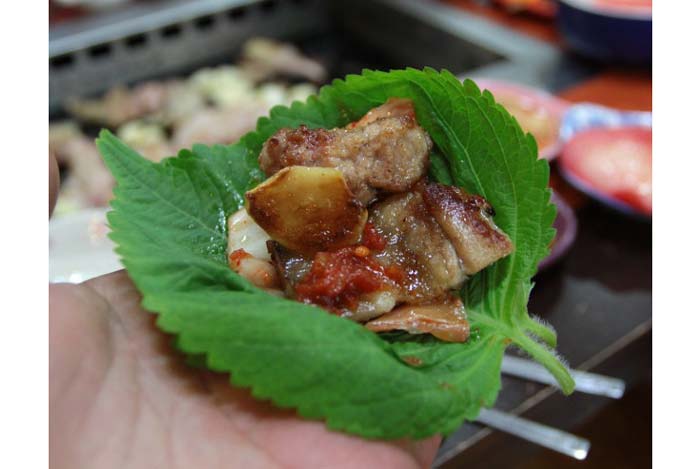In Vietnamese cuisine, sesame leaves have long been a familiar herb. However, not many people are aware of the nutritional value that these leaves possess, often referred to as the “ginseng of the poor.”
Origin and Identification
Sesame leaves, also known as sesame basil or perilla leaves, are an annual herb belonging to the Lamiaceae family. This plant typically grows wild in rural areas but is now commonly cultivated in home gardens. The leaves are heart-shaped with slightly serrated edges, a deep green color, and a distinctive aromatic fragrance.
According to research conducted by the National Institute of Nutrition, 100g of sesame leaves contain up to 250mg of vitamin C, surpassing the levels found in oranges and lemons. Additionally, the leaves are rich in calcium, iron, zinc, and valuable antioxidants.

Amazing Health Benefits
You may be surprised to learn that sesame leaves offer a plethora of health advantages. Dr. Nguyen Thi Lam, former Vice Director of the National Institute of Nutrition, shared in the Health and Life newspaper: “Sesame leaves are highly beneficial for digestion due to their abundant fiber and aromatic essential oils.”
Furthermore, these leaves boost immunity, lower blood cholesterol, and exhibit strong anti-inflammatory properties. Notably, for postpartum women, sesame leaves are used to alleviate colds, enhance skin beauty, and stimulate lactation.
Distinguishing from Red Perilla
Sesame leaves are often confused with red perilla due to their similar appearance. However, sesame leaves have a milder fragrance, a deeper green color, and less serrated leaf margins. In terms of usage, red perilla is primarily used for treating colds and flu, while sesame leaves excel in aiding digestion and enhancing beauty.
Delicious Dishes with Sesame Leaves
Sesame leaves lend their unique flavor to a variety of delectable dishes:
- Grilled meat wrapped in sesame leaves: The natural sweetness of the meat blends beautifully with the leaves’ aroma, creating an unforgettable culinary experience.
- Sesame leaf summer rolls: A refreshing dish that combines sesame leaves with fresh herbs, shrimp or pork, and rice vermicelli.
- Sesame leaf kimchi: A creative twist on traditional kimchi, both tasty and nutritious.
- Stir-fried tofu with sesame leaves: A simple yet nutritious vegetarian dish.
- Sesame leaf salad with garlic and chili: An ideal side dish to accompany any family meal.

Precautions and Storage
Although sesame leaves offer health benefits, they may not suit everyone. Individuals allergic to aromatic essential oils or those taking anticoagulant medication should exercise caution when consuming these leaves.
To prolong the freshness of sesame leaves, rinse them gently, pat dry, and store them in the refrigerator. Alternatively, wrap the leaves in a damp paper towel and keep them in the fridge, ensuring their longevity.
Conclusion
Sesame leaves, despite their humble appearance, are packed with exceptional nutritional value. With their diverse benefits and culinary applications, they are indeed a precious addition to any kitchen. Incorporate these leaves into your daily menu to embrace a healthier lifestyle for you and your family.









